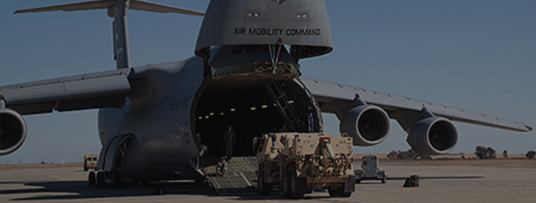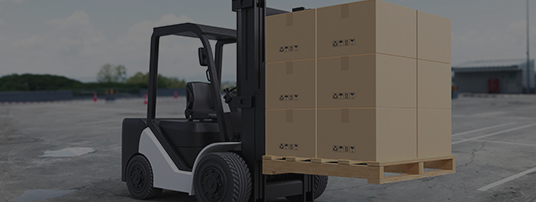Landing gear, also known as the undercarriage, is crucial to the function of any aircraft, providing support during takeoff, landing, and ground operations. Primarily, it absorbs the shocks associated with landing and ensures that an aircraft can safely and efficiently come to a stop. The design and type of landing gear vary depending on a particular aircraft's purpose, weight, and operating environment. In this blog, we will explore the primary types of landing gear used on light aircraft, including the tail wheel (conventional), tricycle, and retractable gear, as well as specialized types.
To start, the tail wheel, or conventional landing gear, is one of the earliest types of aircraft undercarriage. It comprises two main wheels located forward of an aircraft's center of gravity to support most of its weight, and a smaller tail wheel at the rear that provides balance and steering capability on the ground. One significant advantage of the tail wheel configuration is its ability to operate on rough and unprepared surfaces, making it suitable for bush flying and other off-airport operations. However, this design has some drawbacks, including reduced forward visibility on the ground and a tendency to "ground loop," which is when an aircraft can spin uncontrollably during landing or takeoff if not handled properly.
In contrast, the tricycle landing gear configuration, commonly found on modern aircraft, consists of a nose wheel and two main wheels. The nose wheel is located under an aircraft's nose, with the main wheels positioned slightly aft of the center of gravity. This setup provides several advantages, including better forward visibility during taxiing, takeoff, and landing. Additionally, tricycle gear offers greater stability during ground operations and is generally easier to handle for less experienced pilots. However, it can be less effective on rough or soft surfaces compared to the tail wheel configuration, as the nose wheel is more prone to damage or becoming stuck.
Another type that is most often found on more advanced light aircraft is retractable landing gear, which offers significant aerodynamic benefits. This gear can be retracted into the fuselage or wings to streamline an aircraft’s profile and reduce drag, which improves fuel efficiency and performance. The components of retractable gear include an actuator system, which can be hydraulic, electric, or manual, to extend and retract the gear, and doors that close over the wheel wells to maintain a smooth surface. While retractable gear provides desirable performance advantages, it inherently adds complexity, weight, and maintenance requirements to an aircraft. Notably, there is a risk of gear malfunctions, which can lead to emergency situations if it fails to deploy correctly.
Meanwhile, specialized landing gear configurations are also essential for specific operations. Floats, for instance, replace traditional landing gear on amphibious aircraft, allowing them to take off and land on water. This type of landing gear consists of large, buoyant structures with a streamlined hull shape to effectively float on and cut through water. Additionally, retractable wheels can be embedded within the floats to enable operation on both water and land surfaces. Despite their versatile functionality for areas near lakes, rivers, or oceans, the added weight and drag from the floats can reduce overall aircraft performance and increase fuel consumption.
Helicopters utilize a different type of landing gear known as skids, which are elongated, tubular structures that extend horizontally beneath the fuselage and slightly resemble a pair of skis. These durable and lightweight structures allow for landing on a variety of surfaces, including rough and uneven terrain. The primary advantage of skids is their simplicity and robustness, which makes them less prone to damage and easier to maintain than wheeled landing gear. However, skids can make ground handling more challenging, especially on paved surfaces.
In conclusion, the type of landing gear used on light aircraft significantly influences their performance, handling, and suitability for various operational environments. Tail wheel, tricycle, and retractable gear each offer distinct advantages and disadvantages, while specialized landing gear like floats and skids enable aircraft to operate in unique conditions. Understanding these different types of landing gear and their respective benefits and limitations is crucial for pilots, aircraft designers, and aviation enthusiasts alike.
When you require landing gear components or any variety of aircraft parts for operations, there is no better purchasing platform than National Stock Numbers Quotes. We carry over 2 billion new, used, obsolete, and hard-to-find components that we regularly offer with rapid lead times and competitive pricing. More than that, with our high-quality parts and unmatched customer service where we work with you to find optimal solutions, you never have to compromise any of your needs when you shop with us. Discover why so many customers regularly depend on our diverse products and services when you explore our website and connect with our team by RFQ form, phone, or email today.

 The only independent
The only independent



“We Proudly Support Intrepid Fallen Heroes Fund that serves United States Military Personal experiencing the Invisible Wounds of War : Traumatic Brain Injury (TBI) and Post Traumatic Stress (PTS). Please visit website (www.fallenheroesfund.org) and help in their valiant effort”.
If You’re Ever Looking for NSN parts Or Have an Aircraft On Ground Situation, Don’t forget That We offer Competitive Pricing and Guaranteed On-Time Delivery.
Request for Quote